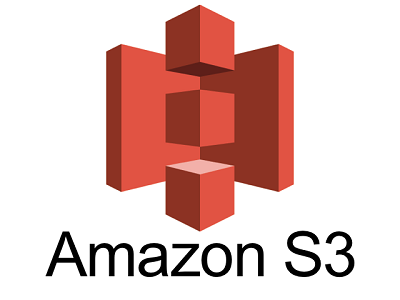The Best Place to Store Your Data: Amazon Redshift vs. Amazon Simple Storage Solutions (S3)
Are you curious about the differences between Amazon Redshift and Amazon Simple Storage Solutions? Here’s what you need to know...

Data storage procurement decisions can significantly impact the overall cost and performance that comes with querying data. This means that it is essential for individuals and businesses to determine which platform or platforms will provide the most effective data storage solutions. While some may select a single platform over others, such as Amazon Redshift or Amazon Simple Storage Solutions (S3), many have also chosen to utilize both systems since different data works more efficiently within each specific platform.
Related: Data Warehouse Strategy: What Questions Should You Ask?
What is Amazon Redshift?
Amazon Redshift is a specialized data warehouse hosted by Amazon Web Services (AWS). It is a fully managed service, so users are not responsible for handling any of the operational or architectural challenges of establishing and scaling the data warehouse. Users scale data in clusters made up of a set of nodes, including one leader node and at least one compute node. The number of nodes within a cluster is determined by the size of the data, the number of queries to be performed, and overall query performance. Redshift provides users with fast and effective data optimization and analysis solutions through existing business intelligence (BI) tools.
What does Amazon Redshift do?
Amazon Redshift enables data usage and analysis to provide users with insights into business processes and possible options for optimization and innovation. Columnar storage technologies are used for the enhancement of productivity and the parallelization of queries across multiple nodes. It also provides superior performance on large data sets, alongside custom ODBC and JDBC drivers, to permit access to a broad range of different SQL clients. Some additional benefits of Amazon Redshift, in terms of its data warehouse processes, include competitive and comparative analysis, high-quality data to enhance the completeness of analysis, and disaster recovery strategies.
What is Amazon Simple Storage Solutions (S3)?

Amazon S3 provides users with access to a reliable, fast, inexpensive, and scalable data storage infrastructure, serving the same purpose as a data lake. With it, one can interface with stored objects using REST and SOAP.
S3 contains a simple web service interface, data storage, and retrieval capabilities that can be used with any data size at any time. Amazon S3 also offers an object storage service that incorporates security, performance, easy-to-use management, data integration, and more. Data configuration and organization within the platform are flexible due to the presence of adjustable access controls, allowing for the delivery of tailored solutions for storing and handling extensive amounts of data.
What Does Amazon S3 Do?
Amazon S3 was developed to offer the maximum possible benefits of web-scale computing for program developers while providing a straightforward storage platform similar to that of a data lake with the addition of optimal foundation provisions present due to its unlimited scalability. Its primary data lake features include standardized APIs, a centralized data architecture, and storage decoupling from data processes and computing. Additionally, an extensive list of AWS and ISV processing tools can easily be integrated into the system, allowing for the addition of several unique and valuable features without clusters and servers.

How to Transfer Data from Amazon S3 to Amazon Redshift
If you choose to use both data storage systems, you can quickly transfer data between them. Moving data from S3 to Redshift can transform the structure of raw data into a form that AWS Redshift can utilize. This can be done by using a data preparation platform, a Redshift ETL pipeline, or using AWS Glue, which is Amazon’s managed ETL service. That being said, ETL pipelines are often very complicated and require extensive coding knowledge. As such, many organizations are shifting away from reliance on traditional ETL solutions. Businesses are doing this by using more modern data preparation platforms that are much easier to use and require less if any coding knowledge, such as the ELT solution Runner.
For more on the topic of transferring data between these solutions, please check out this article:

Amazon Redshift vs. Amazon S3
Amazon Redshift is a data warehouse, while Amazon S3 is object storage. While some businesses may use one over the other, the question of Redshift vs. S3 is not an either/or situation. Many will choose to use both of them at once. In short, Amazon S3 vs. Redshift can be thought of as allowing for unstructured vs. structured data.
As a data warehouse, Redshift requires the data that it works with to be appropriately structured to serve as an effective environment for BI tools and SQL-based clients who utilize standard JDBC and ODBC connections. Meanwhile, Amazon S3 can receive and work with any data size or structure, and the data does not have to have a stated or defined purpose from the get-go. S3 provides a specialized space for exploring data and discovering new innovations that can lead to enhanced opportunities for data analysis.
So don’t feel like you have to choose one data storage solution over another. You have the option of utilizing both to take advantage of the range of benefits that each storage solution can provide.
Would you like help building a superior BI platform, while avoiding cost and time overruns? Take a look at Zuar’s industry-leading services.
Transport, warehouse, transform, model, report & monitor. Runner gets data flowing from hundreds of potential sources into a single destination for analytics. Learn more.


